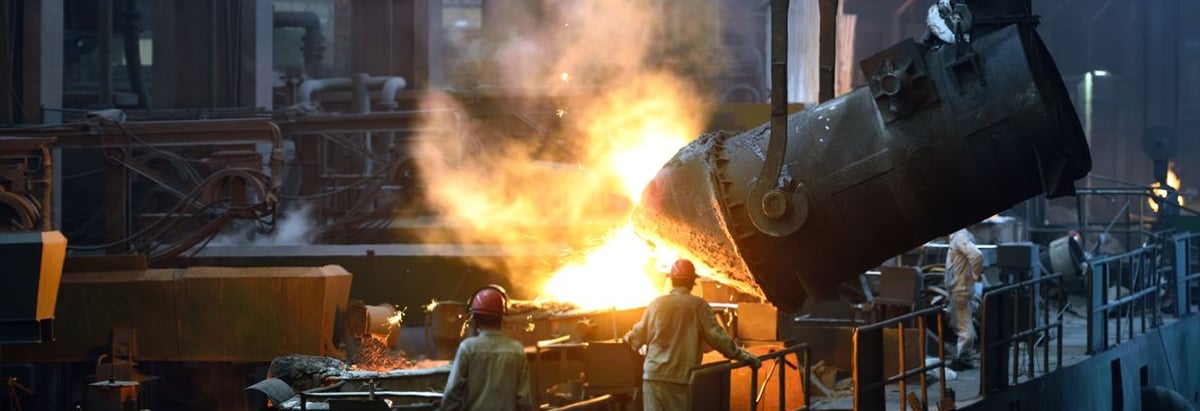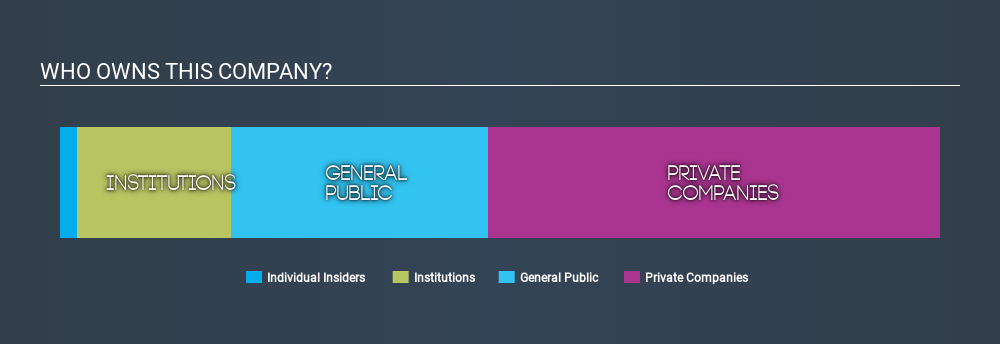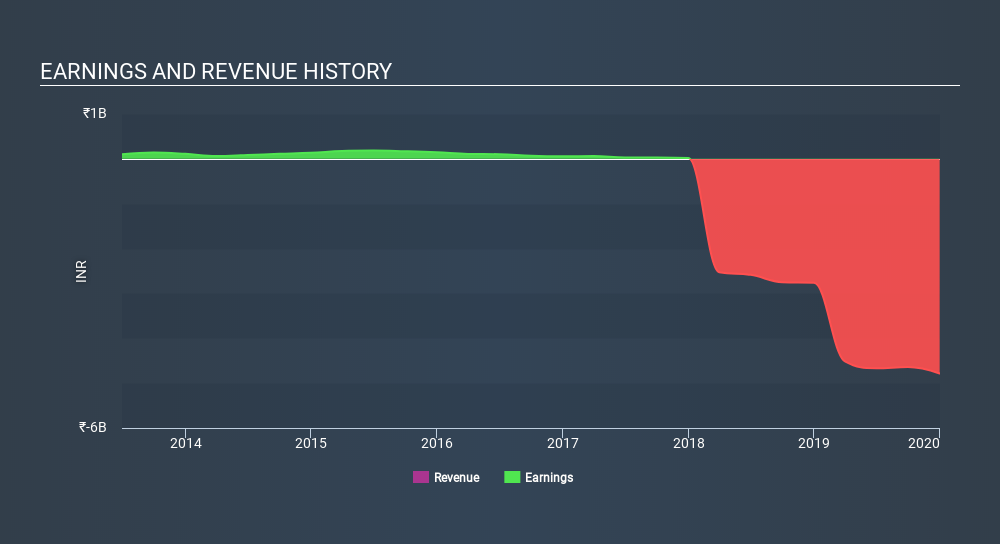- India
- /
- Metals and Mining
- /
- NSEI:ORISSAMINE
Do Institutions Own Shares In The Orissa Minerals Development Company Limited (NSE:ORISSAMINE)?

If you want to know who really controls The Orissa Minerals Development Company Limited (NSE:ORISSAMINE), then you'll have to look at the makeup of its share registry. Large companies usually have institutions as shareholders, and we usually see insiders owning shares in smaller companies. We also tend to see lower insider ownership in companies that were previously publicly owned.
Orissa Minerals Development is not a large company by global standards. It has a market capitalization of ₹8.1b, which means it wouldn't have the attention of many institutional investors. Taking a look at our data on the ownership groups (below), it's seems that institutions are noticeable on the share registry. Let's take a closer look to see what the different types of shareholder can tell us about Orissa Minerals Development.
Check out our latest analysis for Orissa Minerals Development

What Does The Institutional Ownership Tell Us About Orissa Minerals Development?
Institutional investors commonly compare their own returns to the returns of a commonly followed index. So they generally do consider buying larger companies that are included in the relevant benchmark index.
Orissa Minerals Development already has institutions on the share registry. Indeed, they own 17% of the company. This can indicate that the company has a certain degree of credibility in the investment community. However, it is best to be wary of relying on the supposed validation that comes with institutional investors. They too, get it wrong sometimes. When multiple institutions own a stock, there's always a risk that they are in a 'crowded trade'. When such a trade goes wrong, multiple parties may compete to sell stock fast. This risk is higher in a company without a history of growth. You can see Orissa Minerals Development's historic earnings and revenue, below, but keep in mind there's always more to the story.

We note that hedge funds don't have a meaningful investment in Orissa Minerals Development. Rashtriya Ispat Nigam Limited is currently the largest shareholder, with 50% of shares outstanding. This implies that they have majority interest control of the future of the company. The second and third largest shareholders are Life Insurance Corporation of India, Asset Management Arm and 3A Capital Services Limited, Asset Management Arm, holding 13% and 1.7%, respectively.
While it makes sense to study institutional ownership data for a company, it also makes sense to study analyst sentiments to know which way the wind is blowing. Our information suggests that there isn't any analyst coverage of the stock, so it is probably little known.
Insider Ownership Of Orissa Minerals Development
The definition of company insiders can be subjective, and does vary between jurisdictions. Our data reflects individual insiders, capturing board members at the very least. Management ultimately answers to the board. However, it is not uncommon for managers to be executive board members, especially if they are a founder or the CEO.
Most consider insider ownership a positive because it can indicate the board is well aligned with other shareholders. However, on some occasions too much power is concentrated within this group.
I can report that insiders do own shares in The Orissa Minerals Development Company Limited. In their own names, insiders own ₹169m worth of stock in the ₹8.1b company. It is good to see some investment by insiders, but I usually like to see higher insider holdings. It might be worth checking if those insiders have been buying.
General Public Ownership
With a 29% ownership, the general public have some degree of sway over ORISSAMINE. While this group can't necessarily call the shots, it can certainly have a real influence on how the company is run.
Private Company Ownership
Our data indicates that Private Companies hold 51%, of the company's shares. It's hard to draw any conclusions from this fact alone, so its worth looking into who owns those private companies. Sometimes insiders or other related parties have an interest in shares in a public company through a separate private company.
Next Steps:
While it is well worth considering the different groups that own a company, there are other factors that are even more important. For example, we've discovered 4 warning signs for Orissa Minerals Development (2 are a bit concerning!) that you should be aware of before investing here.
Of course this may not be the best stock to buy. So take a peek at this free free list of interesting companies.
NB: Figures in this article are calculated using data from the last twelve months, which refer to the 12-month period ending on the last date of the month the financial statement is dated. This may not be consistent with full year annual report figures.
If you spot an error that warrants correction, please contact the editor at editorial-team@simplywallst.com. This article by Simply Wall St is general in nature. It does not constitute a recommendation to buy or sell any stock, and does not take account of your objectives, or your financial situation. Simply Wall St has no position in the stocks mentioned.
We aim to bring you long-term focused research analysis driven by fundamental data. Note that our analysis may not factor in the latest price-sensitive company announcements or qualitative material. Thank you for reading.
About NSEI:ORISSAMINE
Orissa Minerals Development
The Orissa Minerals Development Company Limited mines and markets iron ore and manganese ore in India.
Slightly overvalued with imperfect balance sheet.
Market Insights
Community Narratives





